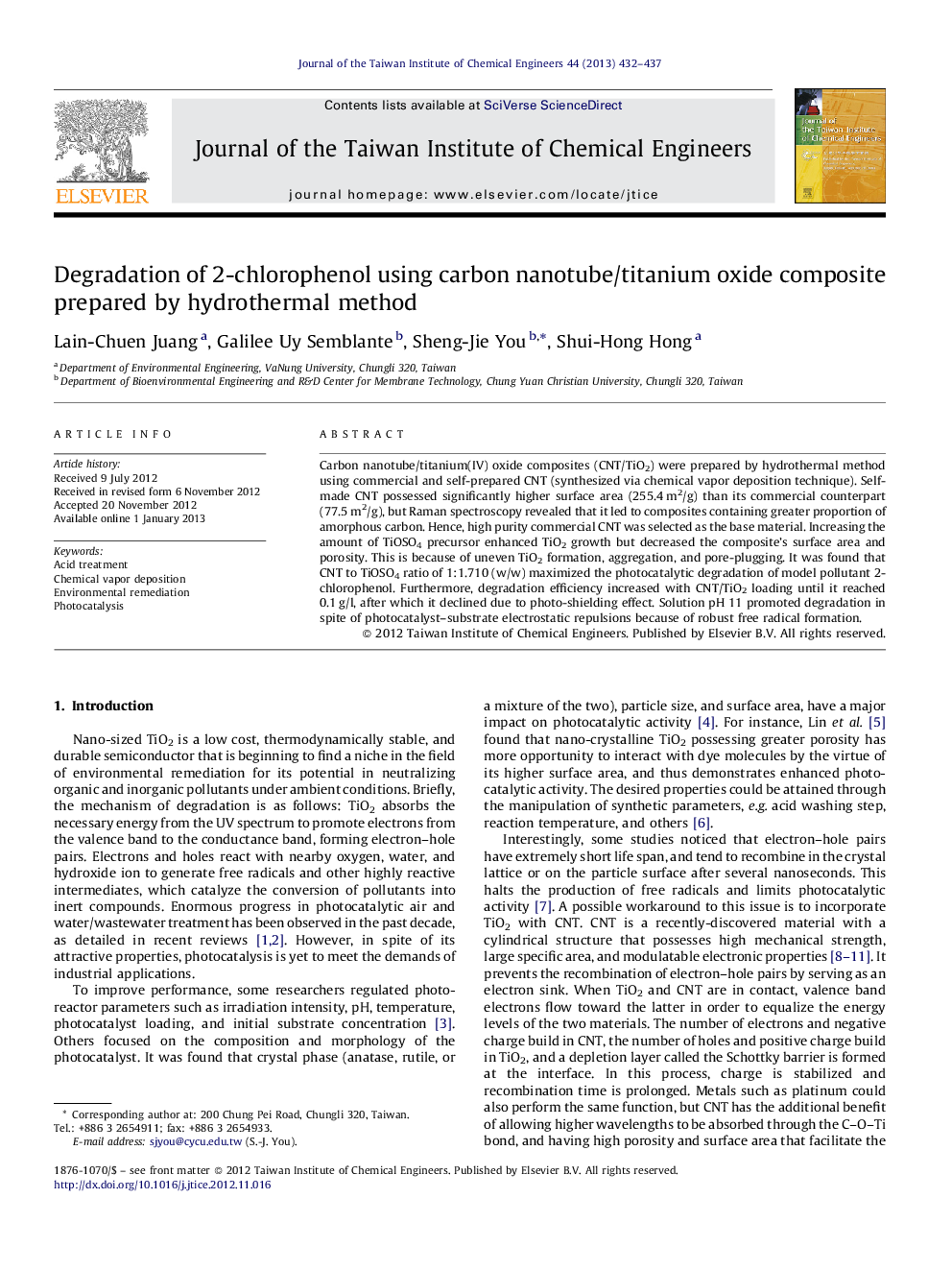| Article ID | Journal | Published Year | Pages | File Type |
|---|---|---|---|---|
| 691120 | Journal of the Taiwan Institute of Chemical Engineers | 2013 | 6 Pages |
Carbon nanotube/titanium(IV) oxide composites (CNT/TiO2) were prepared by hydrothermal method using commercial and self-prepared CNT (synthesized via chemical vapor deposition technique). Self-made CNT possessed significantly higher surface area (255.4 m2/g) than its commercial counterpart (77.5 m2/g), but Raman spectroscopy revealed that it led to composites containing greater proportion of amorphous carbon. Hence, high purity commercial CNT was selected as the base material. Increasing the amount of TiOSO4 precursor enhanced TiO2 growth but decreased the composite's surface area and porosity. This is because of uneven TiO2 formation, aggregation, and pore-plugging. It was found that CNT to TiOSO4 ratio of 1:1.710 (w/w) maximized the photocatalytic degradation of model pollutant 2-chlorophenol. Furthermore, degradation efficiency increased with CNT/TiO2 loading until it reached 0.1 g/l, after which it declined due to photo-shielding effect. Solution pH 11 promoted degradation in spite of photocatalyst–substrate electrostatic repulsions because of robust free radical formation.
► CNT/TiO2 composites were made via hydrothermal deposition method. ► Removal of 2-chlorophenol was directly proportional with catalyst loading and pH. ► Photo-shielding effect occurred after 0.1 g/l of photocatalyst.
